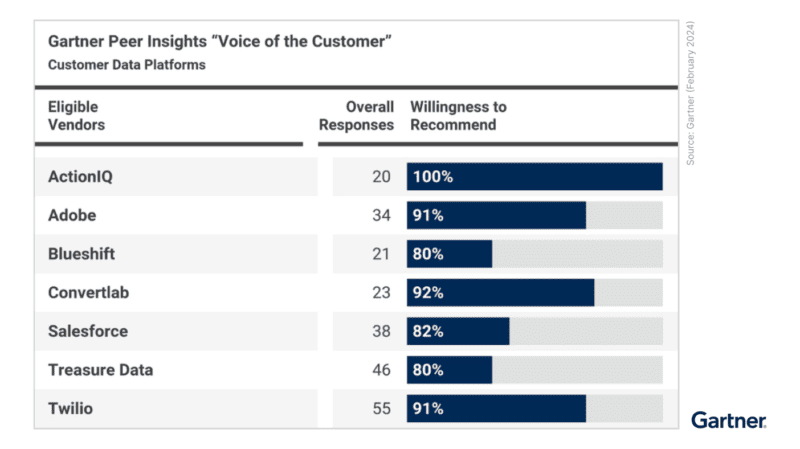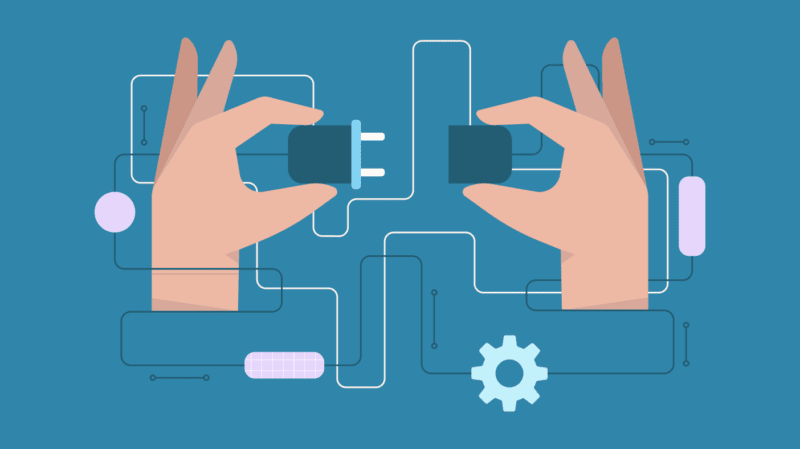Top 10 Mistakes Brands Make When Buying a Customer Data Platform

Research shows that exceptional customer experiences easily beat out low prices and innovative products and services in terms of importance to digital shoppers.
In fact, three out of four consumers will spend more to buy from companies that provide solid CX.
But in order to provide the experiences consumers want, brands require customer insights. That’s why doing without a customer data platform (CDP) is no longer an option for many companies.
After deciding whether to buy or build a CDP, most organizations are tasked with making a purchasing decision — a task that impacts much more than the marketing technology stack.
You can put together a wish list of capabilities and components focusing on enterprise-level scalability, flexibility, connectivity, privacy and more. But in such a crowded and confusing martech landscape, it’s all too easy to make mistakes.
Here are the top 10 mistakes brands make when buying a CDP — and what you can do to avoid them.
CDP Buying Mistake #1: Failing to Define Your Use Cases
One study from McKinsey found that approximately 50% of all digital transformation initiatives fail to live up to expectations.
Why? Because martech buyers failed to properly set them. Among executives across industries, the No. 1 reason given for failed CDP deployment is not having established initial use cases or overcomplicating them.
Many enterprises try to check too many boxes when purchasing a CDP, seeking out a “silver bullet” that will help them execute on each and every use case they can think of (including those that don’t apply to them).
But without zeroing in on the exact outcomes you hope to achieve, your vendor evaluation efforts will be doomed from the start — leaving you open to purchasing shiny, but underperforming, technology.
Solution
Identify points of friction in your customer journeys and determine the data and processes necessary to optimize them. Only after you prioritize your use cases and understand what your business-critical needs are — from objectives to key performance indicators — are you ready to start searching.
CDP Buying Mistake #2: Choosing All-in-One Instead of Best-of-Breed
Who wouldn’t prefer a single solution that (supposedly) solves all your problems?
According to Gartner, the answer is: most martech buyers. Only 29% said they preferred an integrated suite approach when choosing marketing technologies.
That’s because many buyers have learned the hard way that if something sounds too good to be true, it probably is. So-called all-in-one solutions come at the cost of siloed channels, unfriendly user interfaces and sluggish implementation (a common complaint about the Adobe CDP, for example).
Investing in technology that claims to be good at everything likely means it’s not great at anything. Beyond getting a half-baked CDP, you’ll also be locked into an ecosystem that prevents you from plugging and playing different tools as your needs evolve over time.
Solution
Focus on future-proofing your business. You can always mix and match your martech stack as different needs arise — just like the 67% of marketers who add new types of technologies to their stacks either monthly or quarterly. Don’t sacrifice your flexibility and agility in favor of imagined convenience.
See why leading companies like Albertsons choose ActionIQ as their CDP in the video below:
CDP Buying Mistake #3: Forgetting About Data Ingestion
A CDP is only as good as the data that fuels it, but many brands overlook how it’s ingested and transformed when evaluating vendors.
Restrictive data formatting requirements significantly slow down time to value, forcing you to customize (at your expense) how your batch, streaming and API data is uploaded, cleansed and made available to your organization.
Months of up-front scoping and engineering work — not to mention never-ending IT tickets — isn’t anybody’s idea of a good time (or preferred use of resources).
Solution
Seek out technologies that enable you to ingest data as is from the source without having to transform to a predefined schema. Not only will this get you up and running more quickly, it will help you reduce data silos and improve accuracy.
CDP Buying Mistake #4: Not Prioritizing Business Self-Service
Data agility is a perennial challenge for businesses — and the stakes are only getting higher. Sixty-two percent of C-suite executives said non-agile data processes set back their responses to the COVID-19 pandemic. The solution? Self-service user interfaces.
Self-service is essential to unlocking the value of a CDP. Unless everyday business professionals can use it to extract customer insights, identify opportunities and orchestrate customer experiences, you’ll be stuck with operational bottlenecks.
But keep in mind that a pretty user interface isn’t the same as a user-friendly one. The goal is to provide your organization with the tools it needs to execute on marketing, sales and customer service use cases while removing the burdens placed on technical teams.
Solution
Prioritize the democratization of customer data with self-service tools. Driving new revenue and cutting costs are key, but with business-friendly technology in place, you can also reduce reliance on technical teams by 40% — freeing them up to work on higher-impact projects — while increasing marketing efficiency by 25%.
CDP Buying Mistake #5: Underestimating Your Segmentation Needs
Lots of CDPs claim to excel at audience segmentation, but that doesn’t make it true.
While all CDPs can fulfill basic segmentation needs, some platforms have limited data storage. This means users will be forced to go back to your IT team to swap out data in order to execute on new campaigns.
Sort of defeats the purpose, no? Avoid this pitfall by making sure your CDP can store infinite data and segment customers beyond the basics.
Solution
Insist on technology with a no-code interface to quickly define and analyze customer segments (and make sure it leverages all your historical data). Don’t forget the power of machine learning-powered automation, either — you should be able to eliminate manual segmentation processes to generate new insights in real time.
Find out more about how CDPs help different teams in the video below:
CDP Buying Mistake #6: Downplaying Data Model Flexibility
It’s your data — you should be able to use it to execute on whichever business use cases you want. But many brands underestimate the importance of data model flexibility when selecting CDPs.
While native, out-of-the-box schemas can be especially helpful for helping you stand up use cases quickly, they shouldn’t be your only option. Restricted data models keep your hands tied, limiting not only how many use cases you can execute on, but how sophisticated they are.
Solution
Ensure you can choose from both prebuilt and customizable schemas. This flexibility ensures you won’t be punished for not having a crystal ball that allows you to see each and every use case you may eventually want to execute on.
CDP Buying Mistake #7: Overlooking Built-In Journey Orchestration
The ability to unify and analyze data with a CDP is vital, but it’s not much use if you can’t take action on it.
Without an embedded journey building tool, brands are forced to license additional technologies for something their CDP should be able to handle.
You’ll not only have to maintain the data feeds between the technologies — as well as the different (and inflexible) data models that the journey orchestration tool sits atop of — but you’ll have to deal with the fact that these journey building tools only store a subset of data due to their speed-focused infrastructure.
The result? Higher costs, increased technical support and less sophisticated customer journeys.
Solution
Select a CDP that comes complete with customer experience applications, including automated triggers, scheduling features and multi-step customer journey orchestration that covers all your channels. In addition to real-time capabilities, these functionalities should also support testing and measurement that will help you optimize customer journeys over time.
Hear ActionIQ customer e.l.f. Beauty explain the importance of customer journeys in the video below:
CDP Buying Mistake #8: Shortchanging Computation Power
Think your company is computing a lot of data now? Two-thirds of business and IT leaders predict the quantity of their data will increase by 400% by 2025.
The result is this: Brands will be forced to find ways to compute more data in order to serve up personalized customer experiences.
Unless your data infrastructure automatically scales to your data and user workload needs — on demand and in real time — you’ll be spending more time and money overcoming technical limitations than creating better CX.
Solution
Pay special attention to computation capacity and how it scales to meet business needs at query time. Also make sure queries are executed in parallel, as opposed to having to wait for one to finish before another can begin. This is vital to your ability to efficiently and effectively ingest data, generate customer insights and activate customer experiences.
CDP Buying Mistake #9: Confusing Speed With Success
Providing timely experiences is essential to meeting customer expectations, but your CX won’t be relevant or impactful unless it’s based on the full customer profile.
Too many brands settle for real-time customer experiences from their CDPs that are built solely on contextual data. This can power speedy responses, but not necessarily in the right place or at the right time.
Effective real-time CX requires the ability to transform and enrich contextual data with historical information. Otherwise what you’re left with is swift but irrelevant brand interactions.
Solution
Concentrate on powering real-time customer experiences that matter. Ensure you can collect data in real time from any location and in any format, access comprehensive customer profiles and attributes to support real-time strategy, transform and enrich contextual data with historical information and centralize omnichannel experience orchestration.
Learn more about ActionIQ’s Real-Time Customer Experiences solution in the video below:
CDP Buying Mistake #10: Disregarding Non-Marketing Teams
CDPs are often presented as an IT-managed solution for marketers — reducing ad hoc request burdens on the former while empowering the latter to access and activate the customer data they need.
But marketing is far from the only part of your business that should leverage customer data. Customer insights — from consumer behaviors and preferences to likelihood to churn or enjoy upsell and cross-sell offers — are hugely valuable for sales, e-commerce, customer service, technical support and other teams.
While many brands focus on integration with martech stacks, they let seamless connection with sales- and service-related tools fall by the wayside, losing out on potential ways to increase revenue, improve operational efficiency and deliver superior customer experiences across the full breadth of the customer lifecycle.
Solution
Select a CDP that is built with all enterprise use cases in mind. Ensure it has the connectivity and self-service functionality necessary to empower your entire organization and provide all teams — not just marketing — with a single source of customer intelligence to analyze and take action on.
Learn More
Want to avoid common CDP buying mistakes? Download our CDP Market Guide to learn more about options in the market today and inform your selection process.





